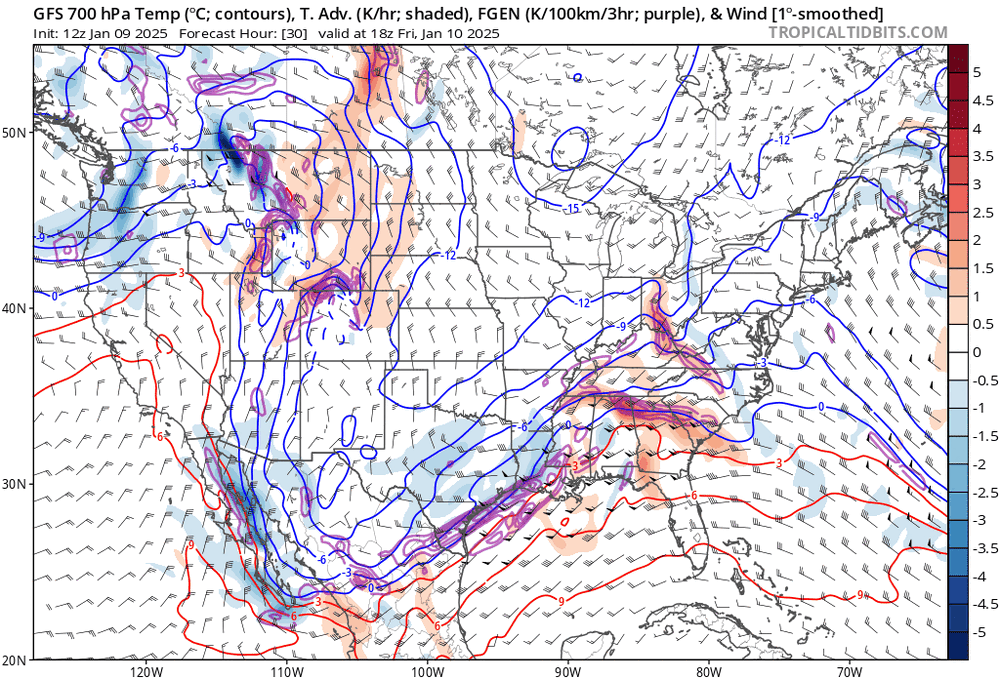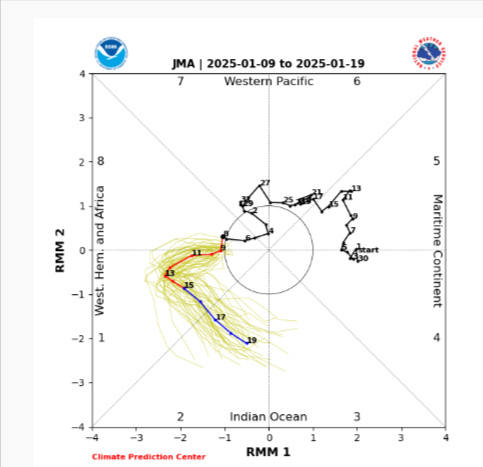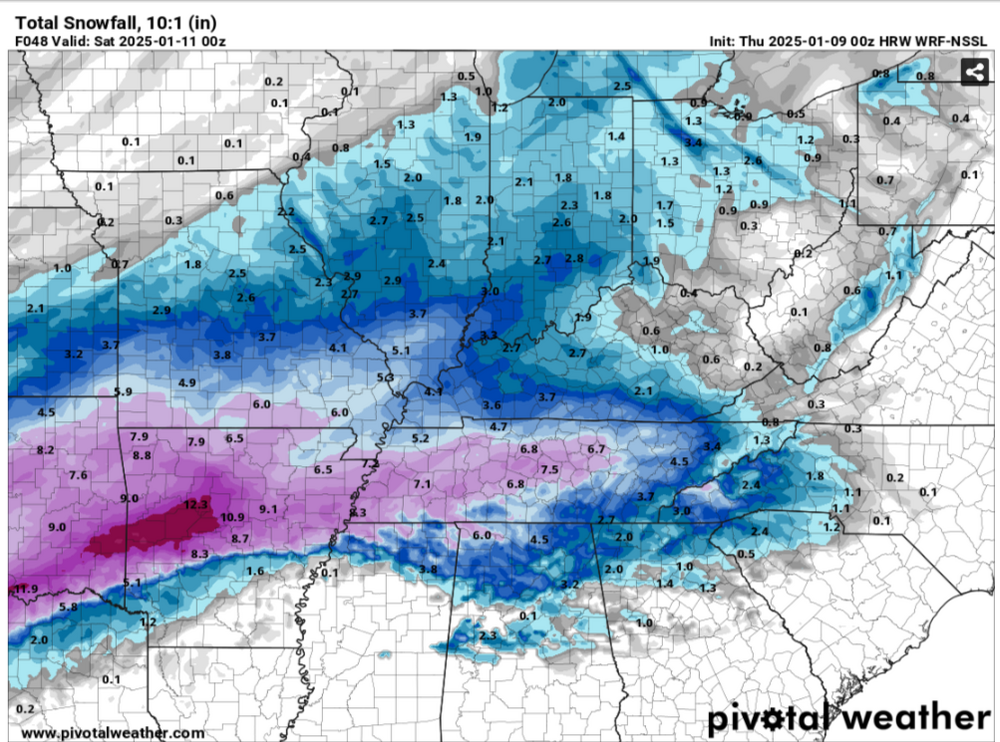-
Posts
8,921 -
Joined
-
Last visited
Content Type
Profiles
Blogs
Forums
American Weather
Media Demo
Store
Gallery
Everything posted by jaxjagman
-
GFS shows a heavy band of snow tomorrow setting up from SW/TN.Mid Tn into east TN,VA after,if it right anyways
-
Long range i still believe the Euro is wrong.Seems possible all its doing is seeing destructive interference from Rossby,Kelvin Waves
-
Not much change just comes in a little faster than earlier
-
National Weather Service Nashville TN 818 PM CST Wed Jan 8 2025 ...New UPDATE... .KEY MESSAGES... Updated at 806 PM CST Wed Jan 8 2025 - High chance of snow accumulation and travel impacts Friday into early Saturday. - Cold temperatures this week with lows in the teens tonight. - Temperatures below freezing during nighttime hours next week will re-freeze any melted snow, resulting in black ice and continued hazardous travel especially on secondary roads. && .UPDATE... Issued at 806 PM CST Wed Jan 8 2025 Skies are finally clearing out of Middle TN as a trough has exited to the east. It`s been cold, but this trough brought a reinforcing shot of colder air. This combined with clearing skies will make for a very cold night across the area. Widespread lows in the teens are expected with a medium chance (30-50%) that temperatures fall into the single digits along the upper Plateau. One more quiet day is on tap Thursday as temperatures only warm into the mid-30s. Our winter storm will be approaching by tomorrow night, with snow moving into the area from southwest after midnight. As far as forecast concerns and uncertainty, not much has changed from the previous discussion below. The bottom line is that you should be prepared for significant travel impacts by mid-Friday morning.
-
-
-
NAM 3K dont show this wild scenario
-
NAM transferred the energy from the GOM to Tn in a couple hours?
-
Man,stronger LLJ
-
Maybe not,more ice this run
-
NAM is slightly strong this run,gonna be a good run for people in the west
-
NAM looks better so far,see what happens
-
Mesoscale model that isnt even that good with severe that far out
-
It brings the LP through Tn,wouldnt trust the HRRR that far out,it usually whiffs
-
Not sure why it made it small,heres the linkhttps://www.wpc.ncep.noaa.gov/discussions/hpcdiscussions.php?disc=qpfhsd
-
LONG TERM... (Thursday Night through next Wednesday) Issued at 1104 AM CST Wed Jan 8 2025 Not much has changed in the forecast with the upcoming snow event. Models have hinted at a slightly further north track, which may allow for warmer air to move further north as well. This could allow for some rain to mix in with the snow especially near the AL border area. Any rain at all would rob moisture for the snow, and lessen snow amounts in that area. But, a further south track would limit moisture in northern zones, and lower snow amounts in that area. So, this is a difficult forecast in regards to snow amounts. At least the chances for sleet and freezing rain are very low with current model data. GFS and GEFS remain the most aggressive with snow and textbook isentropic lift over most of the day Friday, resulting in the heaviest snowfall. NAM has ramped up a little but remains below the GFS, and the ECMWF and ensembles remain on the lower end. Still, 10th percentile snow amounts are in the 1-2 inch range, and 90th percentile is in the 5 to 7 inch range, so we still have a decent spread between the models. Still have 3 to 6 inches across the mid state, with some locally higher amounts possible especially if any mesoscale bands develop with higher snowfall rates. Some of the CAMs are getting into the onset of the snow and suggest snow could start a little earlier than anticipated by a few hours, but either way, Friday will definitely have travel impacts regardless and travel should be avoided. Temps will likely be cooler if we get the snowfall currently in the forecast, so temps will struggle to get above freezing on Saturday. This will keep roads in rough shape especially on less traveled and secondary roads. Lows Saturday night will be in the teens, but there may be some relief Sunday with weak ridging and getting temps to the upper 30s. But another weak Midwest trough will swing through Sunday night into Monday, and could bring some flurries/light snow to the area. At the very least it will bring cloud cover, so any help from the sun on the roads doesn`t look likely. Lows in the teens/20s are expected each night next week, which any melting will result in re-freezing, keeping travel difficult with black ice on any cleared roads.
-
Then i just looked at the 2m's and its not very cold,so maybe it isnt right
-
Could be right,they will probably be colder because of the elevation,thus better ratios
-
Is the snow map 10:i higher than the Kuchera,might be cutting back on the totals like 5-7:1 maybe,i need to find some better models
-
Not as cold?
-
I dont see how a dry slot would effect us if the storm formed into a trowel not the track of the storm forecasted
-
Put with,edited it to without Stove we need his mojo
-
Its not a winter storm without Stove









